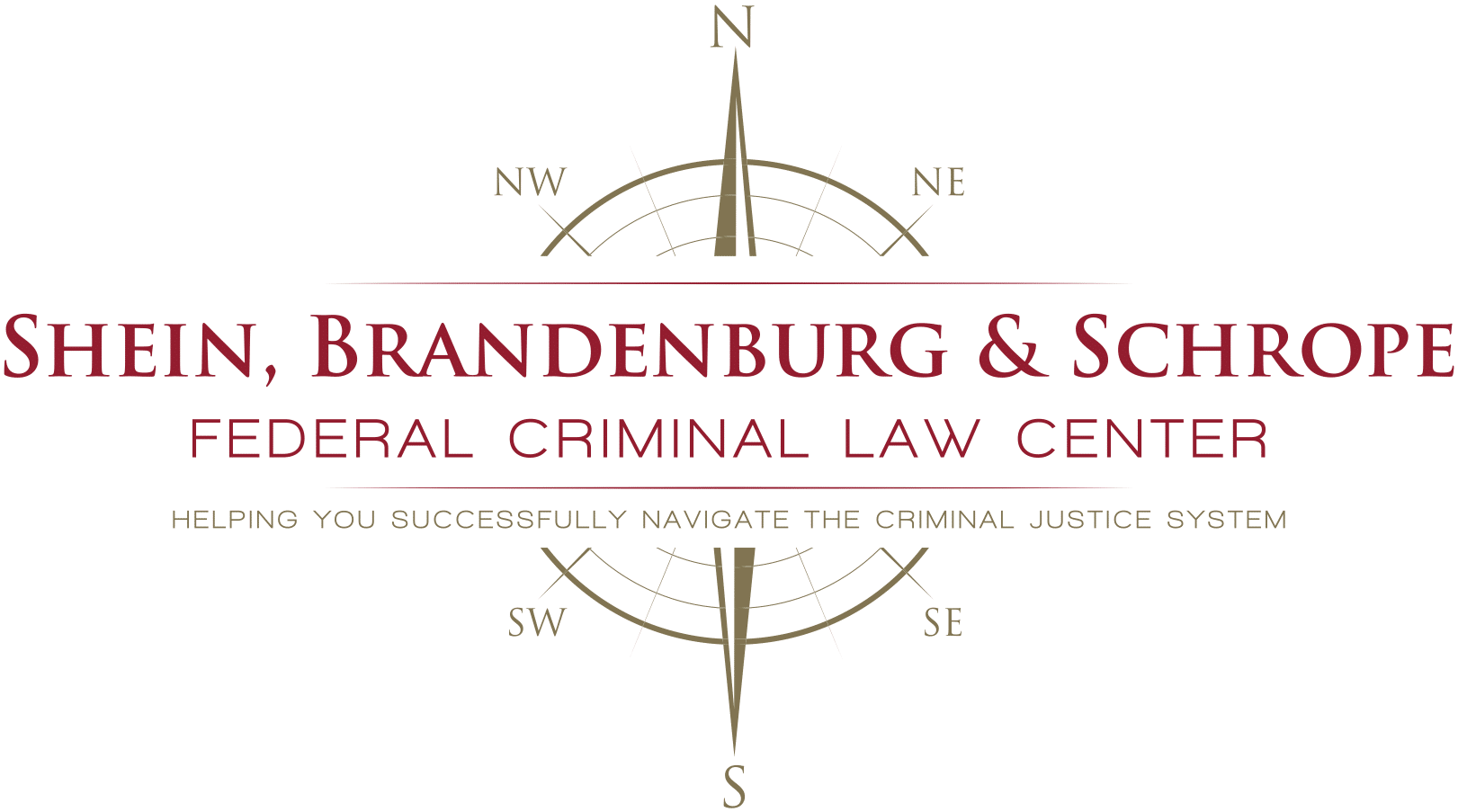From Elizabeth’s interview for the Masters of the Courtroom series on ReelLawyers.com.
Understanding Fraud Conspiracy
Fraud conspiracy—better known by its legal terminology as conspiracy
Defending Against Conspiracy To Commit Fraud
Because conspiracy to commit fraud is basically a crime of intention, the courts must prove that 1) you intended to commit the crime, whether or not it actually happened; and 2) you were co-conspiring with at least one other person to commit the crime. On the other hand, without proper legal representation, it can also be more difficult to prove your innocence when it comes to intention. Our criminal defense attorneys understand these complex issues when it comes to the law and can use these ambiguities to your advantage in mounting a defense. We will conduct a thorough investigation, advise you of your rights and options, and defend your interests from the pre-trial preparation all the way through the trial (and sentencing, if applicable). Possible defense strategies may include providing evidence that you were unaware of any conspiracy and therefore couldn’t have participated in it; that you abandoned the conspiracy before any crime was committed; or that the resulting actions would not have constituted a crime (legal impossibility). If the resulting action is not a crime, the conspiracy is not a crime, either.
Federal fraud charges can cause people to feel confused and powerless. A charge is a life-altering event for not only the person accused, but family and loved ones as well. But if you have been charged with fraud in Georgia or federally throughout the United States, we can help guide you through the muddy waters of the legal system.
What is Fraud and Money Laundering?
The United States government views fraud as the art of deliberate deception for unlawful gain. The term “white-collar crime” is often used to describe a full range of fraud crimes committed by individuals, businesses and government professionals.
- Medical fraud
- Pharmaceutical fraud
- Defense fraud
- Contractor fraud
- Tax fraud
- Bank fraud
- Credit card fraud
- Mail fraud
- Insurance fraud
- Wire fraud
- Conspiracy to commit fraud
- Mortgage fraud
- Healthcare fraud
- Business fraud
- SSC fraud
Charges of money laundering are often related to fraud and drug charges. Money laundering is the practice of engaging in unlawful financial transactions to conceal the identity, source or destination of money.
The essence of conspiracy is the agreement to commit an illegal act. Iannelli v. United States, 420 U.S. 770, 43 L.Ed.2d 616, 95 S.Ct. 1284 (1975); United States v. Snider, 720 F.2d 985 (8th Cir. 1983), cert. denied, 465 U.S. 1107, 80 L.Ed.2d 142, 104 S.Ct. 1613 (1984). The agreement must be between two or more persons. United States v. Moss, 591 F.2d 428 (8th Cir. 1979). A government agent or informant cannot be the only other member of the conspiracy. See, e.g., United States v. Mahkimetas, 991 F.2d 379, 383 (7th Cir. 1993) (joining nine other circuits, the court noted that a conspiracy “may [not] be formed between a criminally-motivated person and a government agent or informer”); Montgomery v. United States, 853 F.2d 83 (2nd Cir. 1988); United States v. Escobar de Bright, 742 F.2d 1196 (9th Cir. 1984).
When Does a Conspiracy Exist?
Most federal statutes require that at least one of the co-conspirators commit an overt act during the course and in furtherance of the unlawful agreement. For example, an overt act is required for a conspiracy under 18 U.S.C. §371 (to commit offense against or to defraud the United States), 18 U.S.C. §1117 (to commit murder); 18 U.S.C. §1201 (kidnapping); and 18 U.S.C. §1751 (Presidential assassination). An over act is not required for 18 U.S.C. §241 (violate civil rights); 18 U.S.C. §2385 (advocate overthrow of government); 21 U.S.C. §846 (drugs); and 21 U.S.C. §963 (RICO). See generally, Grunewald v. United States, 353 U.S. 391, 1 L.Ed.2d 931, 77 S.Ct. 963 (1957); Blumenthal v. United States, 332 U.S. 539, 92 L.Ed. 154 68 S.Ct. 248 (1947). Also see United States v. Shabani, 63 U.S.L.W. 4001 (U.S. Nov. 1, 1994) (a federal drug conspiracy in violation of 21 U.S.C. §846 does not require that any co-conspirator commit an overt act). If the statute requires an overt act and there is none, an essential element of this claimed conspiracy is missing and Rule 80(d)(2)(E) would not apply.
See what our clients have to say…
Not Members of the Conspiracy
The proponent of the evidence must prove that your client and the declarant knew of the conspiracy, purposefully associated themselves with it and affirmatively cooperated in it, or at least agreed to cooperate in the objective of the conspiracy. United States v. Cox, 942 F.2d 1282 (8th Cir. 1991), cert. denied, 117 L.Ed.2d 520, 112 S.Ct. 1298 (1992); United States v. Braidlow, 806 F.2d 781 (8th Cir. 1986); United States v. Casperson, 773 F.2d 216, 221 (8th Cir. 1985). Mere knowledge of the existence of a conspiracy or mere presence or association with individuals engaged in illegal conduct is not sufficient to establish that a part knowingly contributed efforts in furtherance of a conspiracy and thus participated in a conspiratorial agreement. Casperson, 773 F.2d at 221; United States v. Soto, 716 F.2d 989 (2nd Cir. 1983) (mere presence, even with knowledge that a crime is being committed there, is not sufficient to establish that defendant was a member of the conspiracy).
Single acts, without more, are also insufficient to link a defendant to a conspiracy. United States v. Rivera-Santiago, 872 F.2d 1073 (1st Cir. 1989). See also United States v. Arvanitis, 902 F.2d 489 (7th Cir. 1990) (statement by one of the RICO conspirators was improperly admitted against the defendant because proof that the defendant was a purchaser of the RICO conspiracy’s services was not sufficient to establish the defendant’s participation in that conspiracy); United States v. DeLutis, 722 F.2d 902 (1st Cir. 1983) (court reversed defendant’s convictions for conspiracy to distribute cocaine and conspiracy to possess with intent to distribute cocaine because evidence of a single isolated act by the defendant was insufficient to establish that he had knowledge of the conspiracy); United States v. DeNoia, 451 F.2d 979 (2nd Cir. 1971) (mere delivery of heroin to an alleged co-conspirator while carrying a firearm was not enough to convict for conspiracy).
Statement Not Made in Furtherance of the Conspiracy
Generally, the nature of the statement as well as the time and circumstances under which it was made are important in determining whether it was made in furtherance of the conspiracy. Although the “in furtherance” language in Rule 801(d)(2)(E) is given a broad constructions. United States v. Krevsky, 741 F.2d 1090 (8th Cir. 1984), it is not enough that the statement “merely inform[s] the listener of the declarant’s activities.” United States v. Snider, 720 F.2d 985, 992 (8th Cir. 1983), cert. denied, 465 U.S. 1107, 80 L.Ed. 2d 142, 104 S.Ct. 1613 (1984).
A conspirator’s casual comments to people, whether outside or inside the conspiracy, would not meet the “in furtherance” requirement if they merely inform the listener of the declarant’s activities. Id. at 992, citing United States v. Provenzano, 620 F.2d 985, 1000-01 (3rd Cir.), cert denied, 449 U.S. 889, 66 L.Ed.2d 129, 101 S.Ct. 267 (1980). In Snider, the court found that a co-conspirator’s statements to an individual outside the conspiracy merely describing a marijuana-growing farm were not sufficiently “in furtherance of” the conspiracy to qualify for admission under the co-conspirator exception to the hearsay rule. Similarly, in United States v. Bibbero, 749 F.2d 581 (9th Cir. 1984), cert. denied, 471 U.S. 1103, 85 L.Ed.2d 847, 105 S.Ct. 2330 (1985), the Ninth Circuit reversed the defendant’s conviction when it concluded that a comment by a co-conspirator attributing the ownership of the marijuana to the defendant was not made in furtherance of the conspiracy. “To come within the co-conspirator exception, the evidence must indicate that the statement furthered the common objectives of the conspiracy…’mere conversation among the conspirators’ is not admissible.” Id. at 583-84.
Statements consisting of narratives of past activities or statements that are mere “puffing” are not in furtherance of the conspiracy and should not be admitted. Compare United States v. Fielding, 645 F.2d 719 (9th Cir. 1981) with United States v. Lieberman, 637 F.2d 95 (2nd Cir. 1980). Statements that merely “spill the beans” about a conspiracy are not in furtherance of the conspiracy. United States v. Blakey, 960 F.2d 996, 998-99 (11th Cir. Ga. 1992). See also United States v. Means, 695 F.2d 811 (5th Cir. 1983) (government witness testified that, while he was driving a bank president to a meeting with the defendant, the president said that the meeting concerned the bank’s application for a new branch and that the defendant would use his influence for them to obtain the charter in exchange for $25,000; held the testimony was inadmissible because the statements were mere “idle conversation” not intended to further the conspiracy).
Multiple Conspiracies
Another possible argument is that more than one conspiracy existed. This may permit you to argue that your client was not a member of the relevant conspiracy, that the statement was not made during the course of the relevant conspiracy and/or that the statement was not made in furtherance of the relevant conspiracy. If you establish the existence of more than one conspiracy, only co-conspirator statements during the course and in furtherance of the conspiracy involving your client are admissible against your client. United States v. Jackson, 696 F.2d 578, 584-85 (8th Cir. 1982), cert. denied, 460 U.S. 1073, 75 L.Ed.2d 952, 103 S.Ct. 1531 (1983).
The character and effect of a conspiracy cannot be judged by dismembering it and viewing its separate parts, but only by looking at it as a whole. United States v. Patten, 226 U.S. 525, 57 L.Ed. 333, 33 S.Ct. 141 (1913). Multiple conspiracies may involve certain parties common to all the conspiracies, but their distinguishing feature is that they lack an overall goal or common purpose; rather, each agreement has its own distinct illegal end, or “separate adventures of like character.” Kotteakos v. United States, 328 U.S. 750, 769, 90 L.Ed. 1557, 66 S.Ct. 1239 (1946) (multiple conspiracies found in violation of the National Housing Act).
Thus, in United States v. North, 900 F.2d 131 (8th Cir. 1990), the defendant’s conspiracy with another individual was limited to their acts of supplying drugs to each other, and not to a general scheme to distribute drugs in the Northern District of Iowa as the government alleged. Drug distribution by the other individual was a separate conspiracy where the defendant had no knowledge of, received no benefit from, and did not participate in the other individual’s drug distribution. Id. at 133.
The Ninth Circuit has indicated that if no evidence exists other than a single sale by a defendant, the defendant could be considered an independent seller having nothing to do with the larger conspiracy. United States v. Eubanks, 591 F.2d 513 (9th Cir. 1979), quoting United States v. Reina, 242 F.2d 302, 306 (2nd Cir.), cert. denied, 354 U.S. 913, 1 L.Ed.2d 1427, 77 S.Ct 1294 (1957). But see United States v. Nunez, 877 F.2d 1470, 1473 (10th Cir.), cert. denied, 493 U.S. 981, 107 L.Ed.2d 515, 110 S.Ct. 513, 110 S.Ct. 514 (1989); United States v. Lewis, 759 F.2d 1316, 1345 (8th Cir. 1985); and United States v. Heath, 580 F.2d 1011, 1022 (10th Cir. 1978), cert. denied, 439 U.S. 1075, 59 L.Ed.2d 42, 99 S.Ct. 850 (1979) (when large quantities of drugs are involved, each major buyer is presumed to know that he is part of a wide-ranging venture because his efforts will affect the supplies and profits of the entire venture). Obviously, if you are seeking to introduce the co-conspirator’s statement, you need to reverse the arguments contained in this section.

